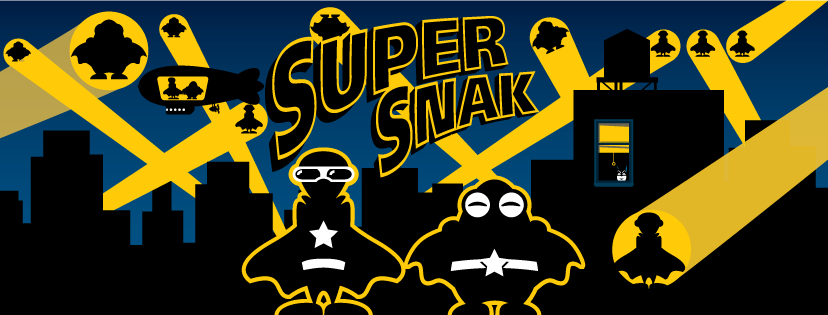
Hej og velkommen til Supersnak med Marvel-Morten & Kim Helt, podcast-serien her på Nummer9.dk.
Denne gang skal det handle om det her:

Hvis du nogensinde har læst amerikanske tegneserier, så genkender du “stemplet”. Det optrådte første gang i 1954, da “the code” blev branchestandard. Kort sagt skulle tegneserier i USA opfylde en lang række krav om sprog og indhold, såsom “ingen sex”, “ingen overdreven vold”, “ingen brug af ordet crime eller horror på forsider” (de kiggede på dig, EC Comics) og absolut “ingen fremstilling af forbrydelse eller forbrydere, som ikke straffes af myndighederne”.
Monstre, nøgenhed, utroskab, skjulte våben, listen er lang – meget blev forbudt. Du kan læse alle reglerne nederst i artiklen her.
Med dette afsnit afrundes trilogien om tegneseriehetzen, der var på sit højeste i 1950erne. I første afsnit handlede det om forlaget EC Comics, i afsnit to om hvordan det forløb i Danmark (man brændte tegneserier – og hyldede det i fagbladet Folkeskolen!).
Nu er tiden kommet til USA, og intet sted i verden gik det vel værre for sig. Der var tv-transmitterede senatshøringer, og hele branchen frygtede en statslig censur, så de kom den i forkøbet med en selvcensur. Meget lig den måde, filmbranchen reagerede tyve år forinden og indførte The Hays Code.

Årti for årti blev stemplet mindre på bladene, som billedet herover så fint illustrerer. Reglerne blev revideret, censuren stadig mere udvandet, men den holdt faktisk ved så sent som til 2011, da DC Comics som de sidste opgav at bære stemplet på sine blade.
Imidlertid måtte vi igennem årtier med lige så udvandede plots, dialog og tegninger. Selvcensuren kostede dyrt, både i kvalitet og tegneseriekvantitet. Forlag lukkede på stribe, og EC Comics-titlerne var blandt de første ofre.

Forrest i feltet af kritikere i 1950erne var Dr. Fredric Wertham (på billedet nedenfor). Men som vi kommer ind på i afsnittet, var han ikke en hykler eller (kun) politisk opportunist; nej, han mente, hvad han sagde.

Og Wertham frygtede oprigtigt, at tegneserierne var ved at omdanne børn til en ny generations nazister – den slags mennesker, han selv var flygtet fra. Han huskes for tegneseriekritikken, men burde i lige så høj grad huskes for sit arbejde med at oprette gratis sundhedsklinikker for samfundets svageste.

Lidt podcastforberedelse!
Forvent horrible citater, både fra høringer og læst højt. Hør, hvordan William Gaines, som vi snakkede om i første del af trilogien, gevaldigt jokker i spinaten (don’t do drugs, kids), og hav det i det hele taget bare fornøjeligt med denne omgang Supersnak – og glæd dig over, at vi er kommet videre!
(Hov, hvad var det? Sagde du, at Maus lige er blevet forbudt i Tennessee?)
Rigtig god fornøjelse med afsnittet.
Illustrationen øverst er af Mark Borello.
Husk: Du kan abonnere på podcastet på iTunes, på Soundcloud og Spotify. Du kan følge Supersnak på Facebook og Instagram og finde samtlige afsnit på vores hjemmeside, supersnak.nu.
Og så kan du selvfølgelig høre det her på siden.
Med venlig hilsen
Marvel-Morten & Kim Helt
Og her får du “The Comics Code” i fuld længde:
The Comics Code of 1954
CODE OF THE COMICS MAGAZINE ASSOCIATION OF AMERICA, INC.
Adopted October 26, 1954
PREAMBLE
The comic-book medium, having come of age on the American cultural scene, must measure up to its responsibilities.
Constantly improving techniques and higher standards go hand in hand with these responsibilities.
To make a positive contribution to contemporary life, the industry must seek new areas for developing sound, wholesome entertainment. The people responsible for writing, drawing, printing, publishing, and selling comic books have done a commendable job in the past, and have been striving toward this goal.
Their record of progress and continuing improvement compares favorably with other media in the communications industry. An outstanding example is the development of comic books as a unique and effective tool for instruction and education. Comic books have also made their contribution in the field of letters and criticism of contemporary life.
In keeping with the American tradition, the members of this industry will and must continue to work together in the future.
In the same tradition, members of the industry must see to it that gains made in this medium are not lost and that violations of standards of good taste, which might tend toward corruption of the comic book as an instructive and wholesome form of entertainment, will be eliminated.
Therefore, the Comics Magazine Association of America, Inc. has adopted this code, and placed strong powers of enforcement in the hands of an independent code authority.
Further, members of the association have endorsed the purpose and spirit of this code as a vital instrument to the growth of the industry.
To this end, they have pledged themselves to conscientiously adhere to its principles and to abide by all decisions based on the code made by the administrator.
They are confident that this positive and forthright statement will provide an effective bulwark for the protection and enhancement of the American reading public, and that it will become a landmark in the history of self-regulation for the entire communications industry.
CODE FOR EDITORIAL MATTER
General standards—Part A
- (1) Crimes shall never be presented in such a way as to create sympathy for the criminal, to promote distrust of the forces of law and justice, or to inspire others with a desire to imitate criminals.
- (2) No comics shall explicitly present the unique details and methods of a crime.
- (3) Policemen, judges, Government officials and respected institutions shall never be presented in such a way as to create disrespect for established authority.
- (4) If crime is depicted it shall be as a sordid and unpleasant activity.
- (5) Criminals shall not be presented so as to be rendered glamorous or to occupy a position which creates a desire for emulation.
- (6) In every instance good shall triumph over evil and the criminal punished for his misdeeds.
- (7) Scenes of excessive violence shall be prohibited. Scenes of brutal torture, excessive and unnecessary knife and gunplay, physical agony, gory and gruesome crime shall be eliminated.
- (8) No unique or unusual methods of concealing weapons shall be shown.
- (9) Instances of law-enforcement officers dying as a result of a criminal’s activities should be discouraged.
- (10) The crime of kidnapping shall never be portrayed in any detail, nor shall any profit accrue to the abductor or kidnaper. The criminal or the kidnaper must be punished in every case.
- (11) The letters of the word “crime” on a comics-magazine cover shall never be appreciably greater in dimension than the other words contained in the title. The word “crime” shall never appear alone on a cover.
- (12) Restraint in the use of the word “crime” in titles or subtitles shall be exercised.
General standards—Part B
- (1) No comic magazine shall use the word horror or terror in its title.
- (2) All scenes of horror, excessive bloodshed, gory or gruesome crimes, depravity, lust, sadism, masochism shall not be permitted.
- (3) All lurid, unsavory, gruesome illustrations shall be eliminated.
- (4) Inclusion of stories dealing with evil shall be used or shall be published only where the intent is to illustrate a moral issue and in no case shall evil be presented alluringly, nor so as to injure the sensibilities of the reader.
- (5) Scenes dealing with, or instruments associated with walking dead, torture, vampires and vampirism, ghouls, cannibalism, and werewolfism are prohibited.
General standards—Part C
All elements or techniques not specifically mentioned herein, but which are contrary to the spirit and intent of the code, and are considered violations of good taste or decency, shall be prohibited. Dialogue
- (1) Profanity, obscenity, smut, vulgarity, or words or symbols which have acquired undesirable meanings are forbidden.
- (2) Special precautions to avoid references to physical afflictions or deformities shall be taken.
- (3) Although slang and colloquialisms are acceptable, excessive use should be discouraged and, wherever possible, good grammar shall be employed.
Religion
- (1) Ridicule or attack on any religious or racial group is never permissible.
Costume
- (1) Nudity in any form is prohibited, as is indecent or undue exposure.
- (2) Suggestive and salacious illustration or suggestive posture is unacceptable.
- (3) All characters shall be depicted in dress reasonably acceptable to society.
- (4) Females shall be drawn realistically without exaggeration of any physical qualities. NOTE.—It should be recognized that all prohibitions dealing with costume, dialog, or artwork applies as specifically to the cover of a comic magazine as they do to the contents.
Marriage and sex
- (1) Divorce shall not be treated humorously nor represented as desirable.
- (2) Illicit sex relations are neither to be hinted at nor portrayed. Violent love scenes as well as sexual abnormalities are unacceptable.
- (3) Respect for parents, the moral code, and for honorable behavior shall be fostered. A sympathetic understanding of the problems of love is not a license for morbid distortion.
- (4) The treatment of live-romance stories shall emphasize the value of the home and the sanctity of marriage.
- (5) Passion or romantic interest shall never be treated in such a way as to stimulate the lower and baser emotions.
- (6) Seduction and rape shall never be shown or suggested.
- (7) Sex perversion or any inference to same is strictly forbidden.
CODE FOR ADVERTISING MATTER
These regulations are applicable to all magazines published by members of the Comics Magazine Association of America, Inc. Good taste shall be the guiding principle in the acceptance of advertising.
- (1) Liquor and tobacco advertising is not acceptable.
- (2) Advertisement of sex or sex instruction books are unacceptable.
- (3) The sale of picture postcards, “pinups,” “art studies,” or any other reproduction of nude or seminude figures is prohibited.
- (4) Advertising for the sale of knives or realistic gun facsimiles is prohibited.
- (5) Advertising for the sale of fireworks is prohibited.
- (6) Advertising dealing with the sale of gambling equipment or printed matter dealing with gambling shall not be accepted.
- (7) Nudity with meretricious purpose and salacious postures shall not be permitted in the advertising of any product; clothed figures shall never be presented in such a way as to be offensive or contrary to good taste or morals.
- (8) To the best of his ability, each publisher shall ascertain that all statements made in advertisements conform to fact and avoid misrepresentation.
- (9) Advertisement of medical, health, or toiletry products of questionable nature are to be rejected. Advertisements for medical, health, or toiletry products endorsed by the American Medical Association, or the American Dental Association, shall be deemed acceptable if they conform with all other conditions of the Advertising Code.
P.S.
Har du set: Supersnak har udgivet en bog! “Fra Moses til Superman” er en lille bog i stil med de populære “Tænkepauser”, den er rigt illustreret af Mark Borello og handler om et af de mest spændende og grundlæggende aspekter ved superheltene.
Og har du set: Kim har skrevet en tegneserie! Den fik Claus Deleuran Prisen for Årets danske debut! Den var nomineret til Pingprisen! Og den kan købes lige her.


Tidligere afsnit af Supersnak:
Tegninger: Mark Borello











